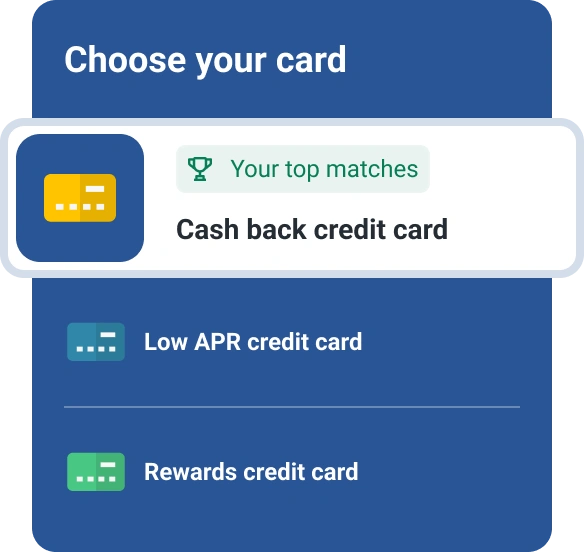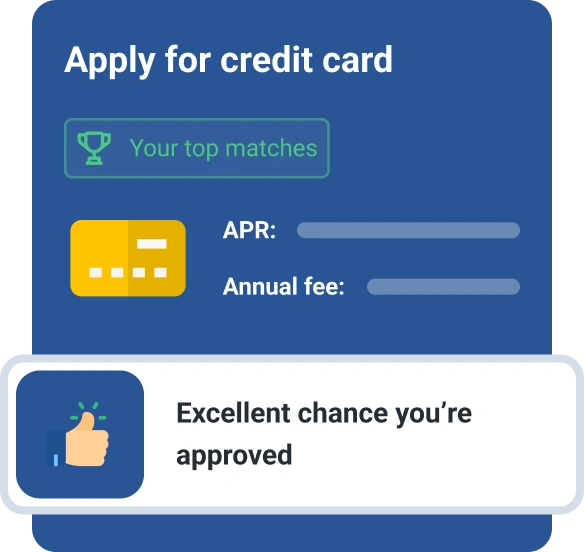What Is Revolving Credit?
Quick Answer
Revolving credit allows you to borrow money up to your credit limit, repay what you’ve borrowed and borrow again. Credit cards, personal lines of credit and home equity lines of credit (HELOCs) are popular types of revolving credit.

If you've ever used a credit card, you've used revolving credit. Revolving credit allows you to borrow up to a certain limit, repay the money and borrow again over time as needed. Understanding how revolving credit works and how to manage it can help you get the most from the benefits of your revolving credit accounts.
How Does Revolving Credit Work?
A revolving credit account comes with a credit limit—the maximum amount you can spend on the account. Each time you use the account, your credit limit is reduced by the amount you spent.
Example: You spend $500 on a credit card with a $2,500 credit limit. You now have $2,000 in credit available.
At the end of each credit card billing cycle, you'll receive an account statement showing your statement balance (the total you owe as of the statement date). You can either:
- Pay the statement balance in full by the due date to avoid incurring interest on your balance.
- Make a partial payment and "revolve," or carry over, the rest of the balance to the following month. You must make at least the minimum payment, which might be a set amount or a percentage of your balance. Unless your account offers a 0% introductory annual percentage rate (APR), any balance carried over to the next billing cycle begins accruing interest, which gets added to your total balance.
When you make a payment, your available credit goes back up by that amount. In the example above, if you pay the full $500 balance, your available credit returns to $2,500.
Learn more: When Should I Pay My Credit Card Bill?
Examples of Revolving Credit
Credit cards, personal lines of credit and home equity lines of credit (HELOCs) are common types of revolving credit.
Credit Card
You can use a credit card to make purchases up to your credit limit. You then pay back the amount you spent, plus any fees or interest charged. If you pay the balance in full before the end of the grace period (usually 21 to 30 days after the end of your billing cycle), no interest accrues.
Some credit cards offer rewards such as points, miles or cash back on eligible purchases. Others feature perks and benefits such as travel insurance or roadside assistance.
Personal Line of Credit
Personal lines of credit, available from some banks, credit unions and online lenders, let you borrow money up to your credit limit.
During the "draw period," which generally lasts up to five years, a line of credit works much like a credit card. You can withdraw money from your credit line and repay what you borrowed in variable monthly payments. These can range from the required minimum payment to the full balance, depending on your needs. As you repay what you borrowed, the money becomes available to borrow again.
During the repayment period, which usually lasts seven years after the draw period ends, you'll pay back the balance plus interest. You can typically pay off the balance as quickly or slowly as you choose, as long as it's repaid in full when the repayment period ends.
Home Equity Line of Credit (HELOC)
A HELOC works like a personal line of credit, but while personal lines of credit can be secured or unsecured, a HELOC uses your home as collateral. Most HELOCs let you borrow up to 85% of your home's equity (the amount by which your home's appraised value exceeds the unpaid balance on your mortgage).
Typically, HELOCs have five- to 10-year draw periods and 20-year repayment periods. During the draw period, you can borrow up to your credit limit and make payments on what you borrow. Depending on your HELOC terms, payments may be interest-only or may include principal. After the draw period ends, you enter the repayment period, during which you repay both principal and interest.
Tip: HELOCs generally have variable interest rates, which can make payments unpredictable; some require a large balloon payment when the draw period ends. Make sure you understand a HELOC's repayment terms before you sign.
Learn more: What You Need to Know About HELOCs
Revolving Credit vs. Installment Credit
The two main types of credit are revolving credit and installment credit. Installment credit allows you to borrow a lump sum and repay what you borrowed, plus interest, over a set period. Installment credit is generally repaid in fixed monthly payments (installments). When your loan is paid off, your account is closed.
Unlike revolving credit, you can't borrow more money against an installment loan as you pay it down. If you want additional funds, you must apply for a new loan.
Installment credit can be secured or unsecured. Secured loans require collateral, which the lender can take if you fail to pay the loan. Home mortgages and auto loans are examples of secured installment credit. If you don't make your payments, the lender can foreclose on your home or repossess your car.
Unsecured loans don't require collateral. This reduces your risk of losing a valuable asset, but increases the lender's risk that they will lose money. As a result, unsecured installment loans may have higher interest rates and be harder to qualify for than secured loans. Personal loans and student loans are types of unsecured installment loans.
| Revolving Credit | Installment Credit | |
|---|---|---|
| Flexibility | Borrow as needed, repay and borrow again up to credit limit | Borrow a lump sum; borrowing more requires a new loan |
| Payments | Varies depending on usage | Fixed monthly payments |
| Interest rates | Typically variable; usually higher than installment credit rates | Typically fixed; usually lower than revolving credit rates |
| Risks | Potential for overspending and high-interest debt | Lender may seize your collateral if you don't repay a secured loan |
Compare personal loan rates
Find APRs from 4.99% to 35.99% and flexible terms of 12 to 120 months. Loan amounts range from $1,000 up to $250,000, with funding available the same day or up to 7 days.
Offers from our partners
View all of our Best Personal Loans for 2025 to see what you’re likely to qualify for, and the rates and terms you might get.
How Do Revolving Accounts Affect Credit Scores?
Revolving credit can either help or hurt your credit score depending on how you manage your account.
How Revolving Credit Can Hurt Your Credit Score
Revolving credit could negatively affect your credit score in the following ways.
- Late payments: Your payment history is the most important factor in your credit score. Even one payment that is late by 30 days or more can significantly damage your credit.
- High credit utilization rate: Your credit utilization ratio, which reflects how much of your available revolving credit you're using, is a major factor in your credit score. Using more than 30% of your available credit, either on a single revolving account or across all your revolving accounts, can negatively affect your credit score.
- Hard inquiries: A hard inquiry on your credit report occurs when you apply for credit and can cause a small, temporary drop in your score. Although the impact of hard inquiries diminishes over time, it's best to avoid them if you're applying for a large loan, such as a mortgage, in the near future.
- Closing an account: Closing an account reduces your available revolving credit, which could increase your credit utilization and could lower your credit score.
How Revolving Credit Can Help Your Credit Score
There are also several ways revolving credit could positively affect your credit score.
- Timely payments: Because payment history is the biggest factor in your credit score, paying revolving credit bills on time can help improve your credit.
- Building a credit history: If you're new to credit, getting a credit card and making payments on time each month can demonstrate responsible credit use.
- Diverse credit mix: Having a mix of revolving and installment credit accounts can benefit your credit score. If your only account is installment credit, opening a revolving credit account could diversify your credit mix, which accounts for 10% of your FICO® ScoreΘ.
Learn more: What Affects Your Credit Scores?
Tips for Managing Revolving Credit
Practice these positive credit habits to manage revolving credit successfully.
- Make payments on time. Consider setting up autopay for at least the minimum payment on revolving credit accounts to avoid late payments.
- Pay more than the minimum. When you make just the minimum payment on a credit card, your balance accrues interest, which typically compounds daily and can quickly snowball into a sizable debt. Pay the statement balance in full each month; if you can't do that, pay as much as you can.
- Minimize credit utilization. It's generally advised to keep credit utilization under 30%; however, lower is better. Paying your credit card bill before your payment due date could reduce the balance that is reported to credit bureaus, which may reduce your credit utilization ratio.
- Monitor your accounts. Review your monthly statements for unfamiliar charges. Setting up text or email alerts of credit card transactions, balance updates and due dates can help you spot fraud, avoid overspending and make timely payments.
Learn more: How to Use a Credit Card Responsibly
The Bottom Line
Revolving credit can be a useful way to pay for both day-to-day purchases and one-time expenses. A good credit score can make it easier to qualify for revolving credit with favorable terms, such as lower interest rates. If you plan to apply for revolving credit, check your credit credit score first. Depending on what you learn, you may want to spend some time working to improve your credit score before you apply.
What makes a good credit score?
Learn what it takes to achieve a good credit score. Review your FICO® Score for free and see what’s helping and hurting your score.
Get your FICO® ScoreNo credit card required
About the author
Karen Axelton specializes in writing about business and entrepreneurship. She has created content for companies including American Express, Bank of America, MetLife, Amazon, Cox Media, Intel, Intuit, Microsoft and Xerox.
Read more from Karen

